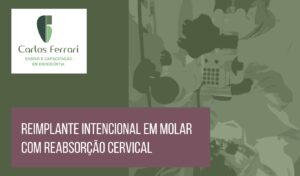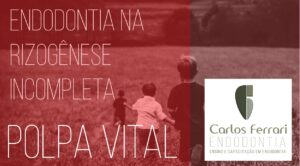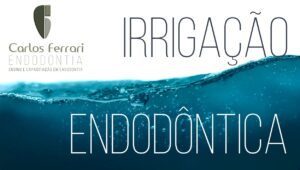Aula sobre a utilização dos recursos da radiologia na endodontia.
Nessa primeira aula discutiremos os conceitos básicos da radiologia, dicas para a revelação e obtenção de radiografias corretas, análise dos erros durante a técnica e revelação, radiografias convencionais e digitais e a relevância do exame radiográfico para o diagnóstico e planejamento, tratamento e proservação.
Relevância do exame radiográfico
Diagnóstico e planejamento endodôntico
A radiologia na endodontia é o recurso que fornece a maior quantidade de informações, tanto como exame auxiliar no diagnóstico, quanto para o planejamento da cirurgia de acesso. Deve-se para essa finalidade, realizar-se no mínimo duas radiografias com angulações horizontais diferentes e em alguns casos faz-se necessário também a variação da angulação vertical, principalmente pra dissociação entre ápice e imagens radiolúcidas na região periapical.
Quando da investigação do estado pulpar devem ser observados a presença de cáries e restaurações e suas relações com a câmara pulpar. Porém, a imagem radiolúcida ou radiopaca por si só observável na radiografia pode localizar-se clinicamente nas faces vestibular ou lingual. Deve-se estar atento portanto ao fato de que o tamanho da imagem ou a sua proximidade com a câmera são apenas auxiliares ao diagnóstico, sendo que o histórico e os dados clínicos obtidos anteriormente se completam às imagens para uma decisão.
Para a observação do estado periapical, devem ser atentamente observados a espessura do ligamento periodontal e a presença de rarefações ósseas, tanto na região do ápice quanto adjacentes à raiz. Imagens de espessamento do ligamento ou radiolúcidas no entorno da raiz, podem ser indicativas de reabsorções ósseas decorrentes de processos inflamatórios pulpares ou dos tecidos periapicais. Deve-se investigar também a presença de reabsorções radiculares. Essas alterações possuem, desde a imagem característica de arredondamento apical, típicas de dentes submetidos a tratamento ortodôntico, até imagens irregulares acompanhadas de reabsorções ósseas, como no caso de reabsorções externas e cervicais, e imagens arredondadas no interior do canal radicular em reabsorções inflamatórias internas.
Em casos de trincas ou fraturas, a observação pode ser extremamente difícil, na dependência da posição da linha de fratura. Em casos em que a linha de fratura se dê em sentido vestibular-lingual, há maiores possibilidades de detecção. Já para o planejamento da cirurgia de acesso, deve-se ter atenção às dimensões da câmara pulpar, notando-se a deposição de dentina secundária e reparadora e nódulos pulpares, que podem causar dificuldades para a localização dos canais.
Uma radiografia interproximal muitas vezes possibilita uma melhor imagem e pode ser também utilizada para essa finalidade. A observação das dimensões da furca também pode ser útil como auxiliar na procura da entrada de canais de difícil acesso. Atenção redobrada a casos com históricos de dentes anteriormente acessados, na procura de danos à furca, instrumentos fraturados ou corpos estranhos. A ausência de uma radiografia com qualidade nesses casos é ainda mais importante, já que serve de comprovação legal e jurídica da intervenção anterior ao atendimento. Deve-se observar também com atenção a anatomia dos canais radiculares na busca de alterações, presença de canais adicionais e curvaturas que podem dificultar sobremaneira o tratamento.
Tratamento.
Durante o tratamento endodôntico, a radiologia na endodontia é de extrema utilidade nas suas diversas fases. Com a tecnologia digital essa interação se tornou ainda mais efetiva e a ergonomia facilitada devido à possibilidade de observação imediata do exame no monitor acoplado na cadeira. O exame é utilizado durante a cirurgia de acesso, para nortear a abertura e a localização dos canais, na odontometria, para determinação do comprimento de trabalho, na prova do cone, para observação do seu ajuste após o preparo e irrigação, na verificação da qualidade da obturação, e como exame final, após o selamento cervical e colocação de restauração provisória. São, portanto, no mínimo, cinco tomadas em um tratamento convencional.
Proservação.
O exame radiográfico é, ao lado do exame clínico, a principal ferramenta para proservação após tratamento endodôntico, tanto em dentes sem alteração periapical como em dentes com lesões periapicais ou após cirurgia paraendodôntica. Nos casos de tratamentos em dentes com normalidade das estruturas periapicais, espera-se a formação de imagem de lâmina dura ao redor do ápice, indicativo de reparação tecidual por formação de tecido duro. Tomadas radiográficas acompanhadas do exame clínico, devem ser realizadas 3 e 6 meses, 1, 2, 3 e 4 anos após o tratamento realizado.





